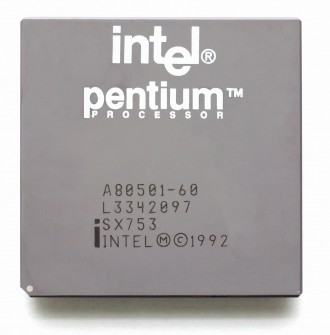Intel's infamous Pentium processor got its start 20 years ago today with the release of the Pentium 60 CPU. That chip utilized Intel's 5-volt Socket 4, was build on an 800-nanometer process and carried 3.1 million transistors. For comparison, today's third generation Ivy Bridge processors use a 22-nanometer process and contain 1.4 billion transistors.
As ExtremeTech notes, early Pentium processors weren't anything special. In fact, the first generation was barely faster than the 486DX chips they replaced. It wasn't until the Pentium 3 came along that Intel really started to find traction with the platform, outpacing competing chips from AMD and Cyrix with ease.
Pentium 4, however, was regarded as a step back in the eyes of many. The architecture was designed to run at very high clock speeds (which it did) but at the expense of real-world performance. These chips also ran extremely hot, meaning they required a large heatsink and noisy cooling fan to keep under control. The misstep ultimately allowed AMD to take the performance crown with their highly successful Athlon line for several years.
Intel eventually found their way again with the Core architecture that debuted near the end of 2007. Interestingly enough, this platform was based on the same P6 architecture used in the first Pentium Pro back in 1995. The rest is pretty much history as Intel has had tremendous success with more recent platforms like Sandy Bridge and Ivy Bridge. With Haswell in sight and AMD hardly visible in the rear-view mirror, Intel appears set to carry on without much major competition for the foreseeable future.
